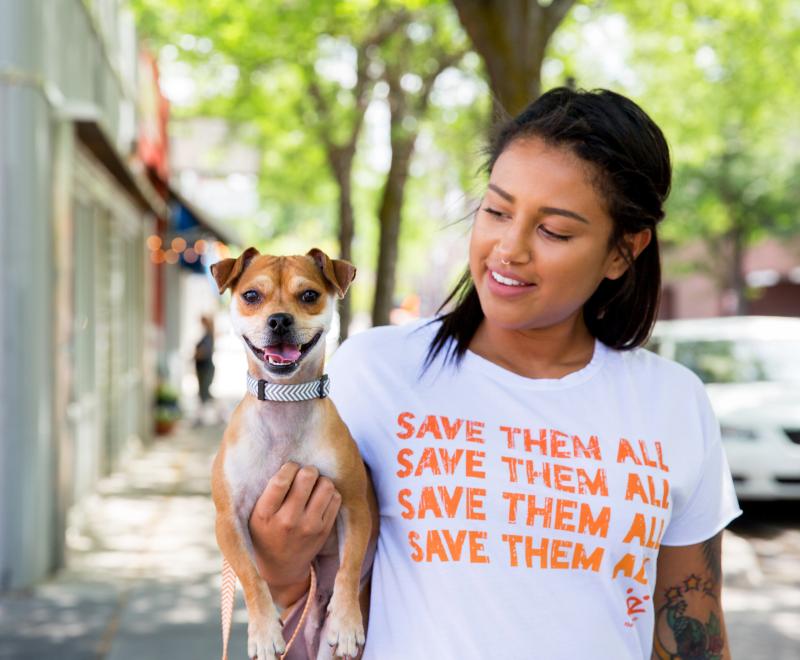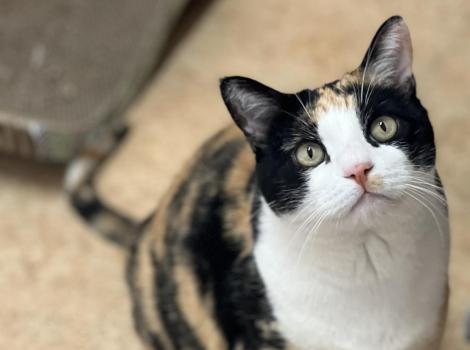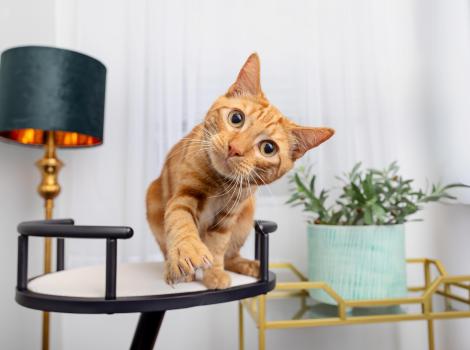Animals from closed zoo find safety at Best Friends

In 2017, damage from Hurricane Maria caused a zoo in Puerto Rico to close to the public. It stayed in operation with plans of reopening in the future; however, due to continued financial hardship and the lingering effects of the hurricane damage, the start of the pandemic in 2020 ultimately spelled the end for the zoo. And when the skeleton crew who remained were unable to handle the upkeep and care of the animals, the United States Justice Department stepped in. The over 300 animals at the zoo (and another 300 in a separate facility) needed help. They had to be moved to sanctuaries and rescue organizations within the continental U.S., or the zoo would face animal welfare charges.
The Wild Animal Sanctuary in Colorado was put in charge of coordinating the effort to place all the animals. In need of parrot-savvy individuals to help with catching, loading, and rehoming the many birds who lived in the zoo, they reached out to Foster Parrots & The New England Exotic Wildlife Sanctuary in Rhode Island and Best Friends Animal Society. Then, the team gathered in Puerto Rico to begin the big move.

Arriving at the zoo
The summer heat bore down on the team as they carefully made their way to the old rhino barn that would serve as their base of operations. They had to watch where they stepped, as the paths were overgrown and falling apart. The zoo had no water or electricity, and as they passed some of the enclosures it only became clearer how much their help was needed. A pair of Patagonian maras — a close relative to guinea pigs and their wonderfully oversized cousins, capybaras — would be traveling to Wild Friends, the part of Best Friends Animal Sanctuary with state and federally licensed wildlife rehabilitation staff. At the zoo, the maras had only a small, bare concrete pen with nowhere to hide and nothing to chew or graze on. Sadly, several of the animals hadn’t survived.
The main aviary, where the efforts of both Foster Parrots and Best Friends staff would be concentrated, towered above the rest of the zoo several stories high. It seemed they would have their work cut out for them, trying to wrangle so many fully flighted birds from the enormous structure. So it was a relief when some of the feathery residents proved quite welcoming.
Cody, a Moluccan cockatoo bound for Best Friends, was especially happy to greet his new visitors. He made himself known immediately with an enthusiastic ‘Hola!’ He stepped right onto an outstretched arm and melted into his new friend’s chest.
Between Best Friends and Foster Parrots, there were over 60 animals to get loaded and ready for their trip back to the mainland. And it would take two full days under the hot sun to gather them all for their early morning flights the following two days. However, not all the animals were at the zoo; several of the parrots were at a holding facility on the other side of the island. And it was there the team encountered an unexpected complication.

Flight to a brighter future
Some of the birds Best Friends was meant to take were babies, still being hand-fed. There were already transport complications due to the high temperatures and cargo regulations, but this brought a new challenge. These babies would need to be fed every three to four hours at least, meaning that staying in cargo with the rest of the animals was not an option.
There were five baby quaker parrots who would be traveling to the Sanctuary and six baby canary-winged parakeets (as well as a litter of kittens) who would be going with the Foster Parrots team. Finding a flight that would allow a whole flock of baby parrots in the cabin was not simple, but find it they did. And soon — after a night of hand-feeding barely feathered babies in a hotel room and a morning of similar airport shenanigans — everyone was safely aboard their planes and ready to head home.
[Determined cockatoo climbs into the lap of luxury]
While the original plan had been for everyone to travel to Las Vegas, the weather had other ideas. It was too hot for the former zoo animals to fly into Las Vegas. So, with the exception of the baby parrots who’d traveled in the cabin, they went instead to Boston. There, they had an extended layover with Foster Parrots until staff were able to drive the maras and parrots across the country to the Sanctuary in Utah.
“When it was all said and done, we brought back 63 animals to be dispersed between five parrot rescue groups across the country,” says Sierra Medlin, manager of Parrots, Bunnies, and Wild Friends at the Sanctuary. “There was a wide range of emotions on this trip: angry and heartbroken over the conditions of the animals, fear of their ability to make the long journey to safety, lingering thoughts about the animals who didn't survive long enough for us to get there.
[High school aviary is for the (adopted) birds]
“But it was overpowered by pure joy at the spirit that so many of the birds had and knowing that dozens of organizations across the country stepped up to help the 600 animals within a matter of four months. And we got to play a part in that. … We were so relieved and excited to welcome our new additions to the Sanctuary.”

Settled in at the Sanctuary
Now, a month after their long trip from Puerto Rico, our new feathered (and furred) friends are settling in spectacularly. The maras are enjoying a spacious enclosure with huts to hide in; toys to chew; plenty of healthy food to fill their bellies; and even a sandbox to dig, roll, and play in. They’re still a little shy and unsure of the new smells and sounds all around them, but now they have all the time and space they need to get comfortable.
At Parrot Garden, the newcomers are causing quite a stir. Cody and a second cockatoo, Lolita, are proving to be quite the gregarious greeters, always ready with a hearty “Hola!” when they have visitors. Meanwhile, the baby quakers (Harry, Joe, Taylor, Jake, and Tom — all named after Taylor Swift exes) are especially snuggly. If you have never been cuddled by a flock of baby parrots, you are missing out. It is impossible to have a frown on your face with five feathery green fledglings playing and falling asleep in your hands, on your shoulders, and on top of your head.
Getting the animals out of the shut-down zoo was no easy feat. It took hours of teamwork and coordination in the heat and more-than-tricky conditions while dealing with last-minute surprises and changes. But after all of it — with parrots and maras safe and sound, blossoming brightly in their new surroundings — there’s no question that it was worth it. And as the rest of the zoo’s past residents make their own trips to their new homes, everyone can breathe a sigh of relief to know they’re going to have a whole lot more to look forward to now.






